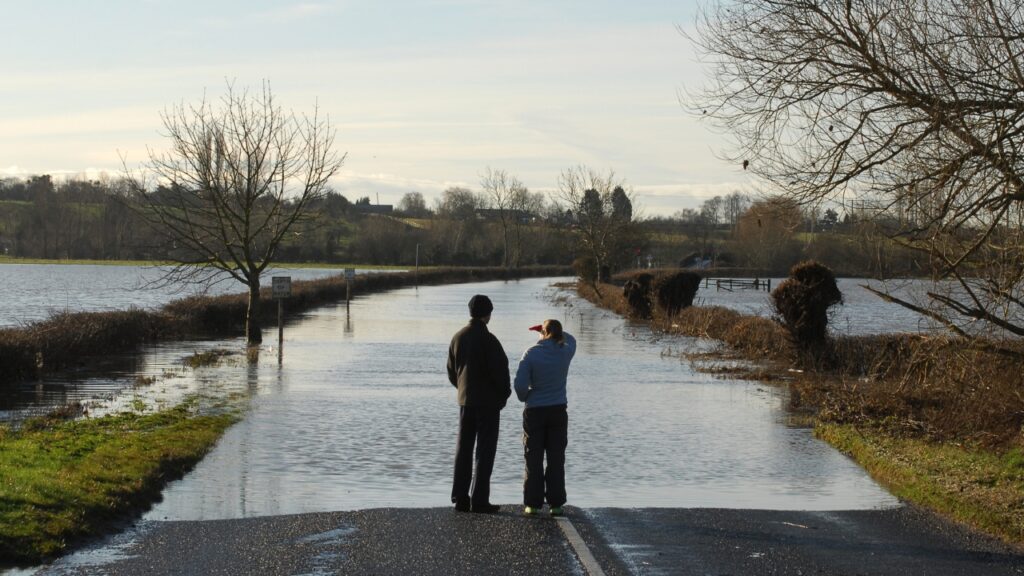
Severe storms, hotter heatwaves, worsening floods – is it climate change?
When an extreme weather event occurs, like a heatwave or a flood, one of the first questions asked is: why did this happen?
Extreme weather events are caused by a number of different factors. Some are naturally occurring, and this is known as natural variability. For example, the naturally occurring climate pattern El Niño had a huge impact upon the soaring temperatures recorded last year.
However, some extreme weather events are also influenced by climate change – driven by human activities that create greenhouse gas emissions.
When an extreme weather event happens it is important to be able to determine what caused the event, and whether climate change had an effect on the event.
In this article we explain what climate change is, how scientists are working out if climate change is affecting extreme weather, and what this means for living in a warming world.
Climate change
The climate describes the long-term weather patterns of a particular place. For example, the UK has a temperate climate, meaning that it gets cool, wet winters and warm, wet summers.
Climate change is a shift in the average climate over a long period of time. Today, our climate is changing rapidly, driven by human activities and the burning of fossil fuels since the Industrial Revolution. When burnt, fossil fuels release greenhouse gases into the air that absorb heat energy. They act like a blanket wrapped around the earth, trapping some of the sun’s heat within our atmosphere. The more greenhouse gases in our atmosphere, the more heat is trapped.
The average temperature of the planet has risen by around 1.2°C since the Industrial Revolution and the last ten years was the warmest decade ever recorded.
Climate attribution studies
Climate attribution studies determine whether a specific extreme weather event was affected by climate change.
Climate attribution studies answer two main questions:
- Did climate change make the weather event worse?
- Did climate change make the event more likely?
To carry out an attribution study, researchers use data from weather observations and complex computer climate models. Climate models can be used to look backwards and forwards in time, modelling what the climate would be like at different times.
Attribution studies study what a weather event would have been like without the effects of climate change – before the Industrial Revolution – and what the same event would be like in the future if the climate crisis continues to worsen.
Climate attribution studies take a lot of time because they involve so much information. It can take a long time to collect all of the data, run the computer models, and then analyse the results.
However some attribution studies can be completed in the weeks after an extreme weather event. This is known as rapid attribution which can inform discussions about the causes of an event while it is still fresh in the memory.
In recent weeks, the World Weather Attribution organisation issued a report about how the deadly Mediterranean heatwave this summer would not have occurred without human induced climate change. Greece, Italy, Spain, Portugal, France and Morocco experienced extreme heat in July 2024, causing at least 23 fatalities, widespread wildfires and bringing public life to a hold. The heatwave occurred after 13 months of extreme heat globally, with each of the last 13 months being the hottest ever recorded.
Adapting to climate change
Understanding the impacts of climate change on extreme weather events is crucial for our future living in a warming world.
From climate attribution studies, we now know that every heatwave in the world is now made hotter and more likely to happen because of human-caused climate change.
Answers from attribution studies can highlight the importance and need for climate action, and can also help identify locations that are disproportionately affected by climate change and extreme weather events. In the future, this could impact where people live, and how we adapt to be resilient to climate change, for example planning climate change resistant infrastructure.
Climate attribution as a communication tool
The effects of climate change will often feel most “real” during an extreme event, such as a flood or heatwave, especially when significant harm is caused. The process of linking an individual extreme weather event to climate change – event attribution – is now a commonly used and effective tool, often communicated to decision-makers, media, and the public in near-real time.
Climate scientists Rowan Sutton and Ed Hawkins at the National Centre for Atmospheric Science have published their insights on how attribution can be used as an important communication tool about local climate risk.
Using observations of weather and climate, Rowan and Ed and their colleagues from the University of Reading and UK Centre for Ecology & Hydrology, developed a physically plausible “causal chain” visualisation to demonstrate the connections between global carbon dioxide emissions and local climate events. In one particular example, they highlight how increased flood risk in one river basin in the UK could be discussed with people directly affected by recent floods.
